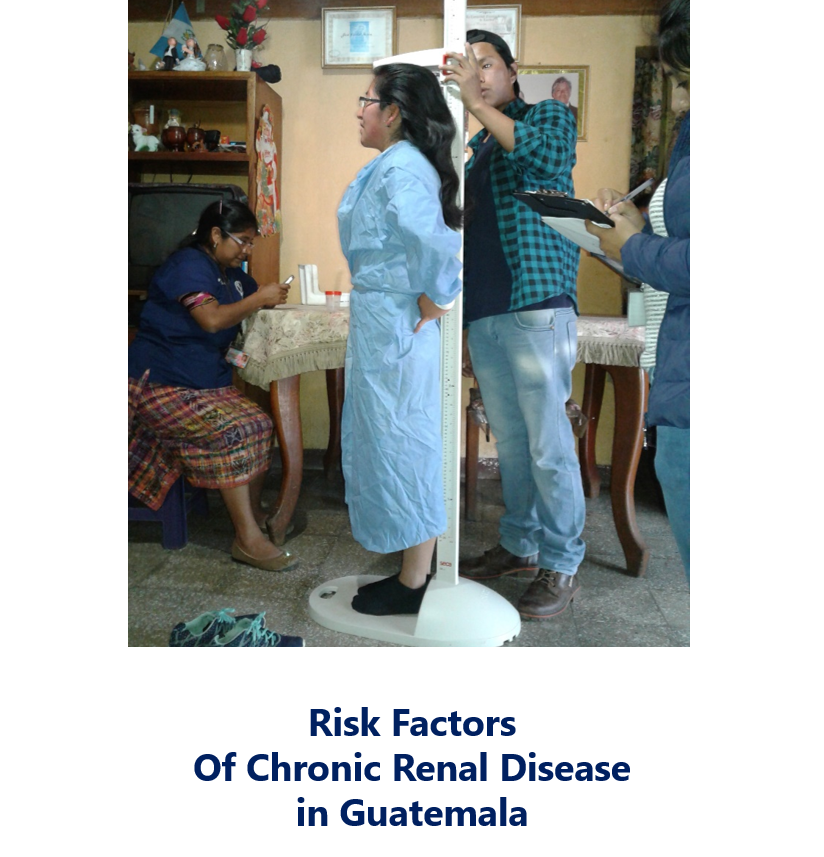
Risk Factors of Chronic Renal Disease in Guatemala
|
Participating
institutions name and acronyms |
Brigham and Women’s Health Hospital/Harvard Medical School Wuqu Kawoq/Maya Health Alliance INCAP Cardiovascular Surgical Unit- UNICAR |
|
CIIPEC Researchers |
Carlos Mendoza Montano |
|
Abstract |
In Guatemala, the mortality rate from chronic kidney disease (CKD)
has tripled over the last decade, and the RRT rate is substantially less than
the regional Latin American average, suggesting significant under detection.
In addition, a recent series of registry- and center-based reports have
highlighted the probable existence of CKD among agricultural workers in
Guatemala. However, there is no existing population-level data on CKD in
Guatemala and representative surveys of diabetes, hypertension, and other
important risk factors are largely limited to urban centers. However, nearly
50% of the population is indigenous Maya, residing in rural agricultural
communities. This population also has one of the highest rates of child
undernutrition in the world, and low birthweight is prevalent. These early
life exposures likely amplify the risk for diabetes, CKD, and other noncommunicable diseases later in life. |
|
General objective |
To determine the prevalence of CKD and risk factors associated with
this disease in two communities of Guatemala, as well as factors associated
with access to health services for CKD. |
|
Methodology |
This project studies the prevalence of CKD and Non-traditional
Chronic Kidney (CKDnT) using a cross-sectional design in a representative
sample of two distinct, underserved, rural communities in Guatemala: one
indigenous Mayan community (Tecpan, Chimaltenango) and one non-indigenous
agricultural worker community (San Antonio, Suchitepéquez). The study also
aims to identify risk factors using a case-control study and to collect
qualitative data from participants to better understand disease narratives
and care seeking behaviors. |
|
Project duration |
January 2018- December 2020 |
















